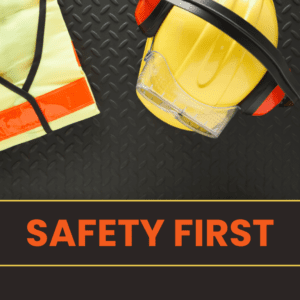Essential Tips for Handling Commercial Auto Claims

The cannabis industry, like any other, relies heavily on transportation for various operations, including the delivery of products and the movement of raw materials. With the increasing legalization and expansion of the cannabis market, ensuring the proper management of commercial auto claims has become crucial. Effective risk management can help cannabis businesses avoid significant financial losses and maintain smooth operations. Here are some essential tips for handling commercial auto claims in the cannabis industry.
-
Implement Comprehensive Driver Training Programs
One of the most effective ways to reduce commercial auto claims is by ensuring that all drivers are well-trained. This includes:
Defensive Driving Courses: Regular training on defensive driving techniques can help drivers anticipate and react to potential hazards, reducing the likelihood of accidents.
Cannabis-Specific Regulations: Make sure drivers are aware of and comply with all cannabis-specific transportation regulations, including state and local laws.
Ongoing Education: Regular refresher courses and updates on new laws and safety practices.
-
Maintain a Rigorous Vehicle Maintenance Schedule
Proper maintenance of vehicles is critical to preventing accidents and minimizing claims. Develop a strict maintenance schedule that includes:
Regular Inspections: Conduct routine inspections of all vehicles to identify and address potential issues before they lead to accidents.
Timely Repairs: Ensure that any necessary repairs are completed promptly to keep vehicles in safe operating condition.
Documentation: Keep detailed records of all maintenance and repairs to demonstrate due diligence in case of a claim.
-
Use Advanced Telematics and GPS Tracking
Leveraging technology can significantly enhance risk management for commercial auto operations. Consider implementing:
Telematics Systems: These systems provide real-time data on vehicle performance and driver behavior, allowing you to identify and correct risky practices.
GPS Tracking: GPS tracking can improve route planning and efficiency, reducing the time drivers spend on the road and their exposure to risk.
Data Analysis: Regularly analyze telematics data to identify trends and areas for improvement in your fleet management.
-
Develop a Robust Incident Response Plan
Even with the best preventive measures, accidents can still happen. A well-prepared incident response plan can help mitigate the impact of such events:
Immediate Actions: Ensure drivers know what to do immediately following an accident, including securing the scene, reporting the incident, and gathering information.
Documentation: Train drivers on how to document the accident scene thoroughly, including taking photos and obtaining witness statements.
Communication: Establish clear lines of communication for reporting accidents to management and insurance providers promptly.
-
Ensure Adequate Insurance Coverage
Having the right insurance coverage is essential for protecting your business from the financial fallout of accidents. Work with an insurance provider experienced in the cannabis industry to:
Assess Coverage Needs: Ensure your policy covers all potential risks, including liability, collision, and comprehensive coverage.
Review Regularly: Regularly review and update your insurance coverage to keep pace with changes in your operations and the regulatory environment.
Understand Exclusions: Be aware of any exclusions in your policy and take steps to mitigate those specific risks.
-
Promote a Culture of Safety
Creating a safety-conscious culture within your organization can have a significant impact on reducing accidents and claims. This includes:
Leadership Commitment: Ensure that company leadership prioritizes and promotes safety in all operations.
Employee Engagement: Encourage all employees to take an active role in maintaining safety, including reporting hazards and participating in safety training.
Recognition Programs: Implement programs that recognize and reward safe driving practices and other safety initiatives.
-
Stay Informed on Industry Regulations
The regulatory landscape for the cannabis industry is constantly evolving. Staying informed about changes in laws and regulations that affect commercial auto operations is crucial:
Regular Updates: Subscribe to industry publications and join professional organizations to stay current on regulatory changes.
Compliance Audits: Conduct regular compliance audits to ensure your operations meet all legal requirements.
Legal Consultation: Work with legal experts who specialize in cannabis regulations to navigate complex legal challenges.
By implementing these essential tips for handling commercial auto claims, cannabis businesses can effectively manage their risks, reduce the likelihood of costly accidents, and maintain smooth and efficient operations. Prioritizing safety and compliance not only protects your bottom line but also contributes to the overall success and reputation of your business in the rapidly growing cannabis industry.
FAQs
- Why is driver training important in managing commercial auto claims? Driver training is crucial because it ensures that drivers are well-equipped to handle the unique challenges of driving in the cannabis industry. Proper training reduces the likelihood of accidents by promoting safe driving practices and compliance with cannabis-specific transportation regulations.
- What are the benefits of a regular vehicle maintenance schedule? Regular vehicle maintenance helps prevent mechanical failures that could lead to accidents. It also ensures that vehicles remain in safe operating condition, reducing the risk of claims and demonstrating due diligence in case of an incident.
- How can telematics and GPS tracking improve risk management? Telematics and GPS tracking provide real-time data on vehicle performance and driver behavior. This data can be used to identify and correct risky practices, improve route planning, and enhance overall fleet efficiency, thereby reducing the risk of accidents.











